Thai Tom Yum Soup recipe on your table in 30 minutes! One of the easiest, quickest, yet most flavorful soups you will ever taste!
Tom Yum Soup is the most popular soup in Thailand – for a reason. It’s bold yet light, tart, salty and citrusy, bursting with layer upon layer of intoxicating flavor from the lemongrass, garlic, galangal, kaffir lime leaves, lime juice, and fish sauce along with tender juicy shrimp and mushrooms. This Tom Yum Soup recipe is naturally gluten free and can be made vegetarian and vegan as well. I’ve also included pantry friendly substitutions for the more exotic ingredients such as galangal and kaffir lime leaves that aren’t authentic but they taste like it! Because everyone needs Tom Yum Soup in their life!
It’s no secret that Thai food is my favorite cuisine! I’ve created recipes for several of my favorite Thai dishes including Panang Curry, Red Curry, Pad Thai, Tom Kha Gai, Yellow Curry, Coconut Curry Chicken, and so much more – so don’t miss out!
Tom Yum Soup Recipe Video
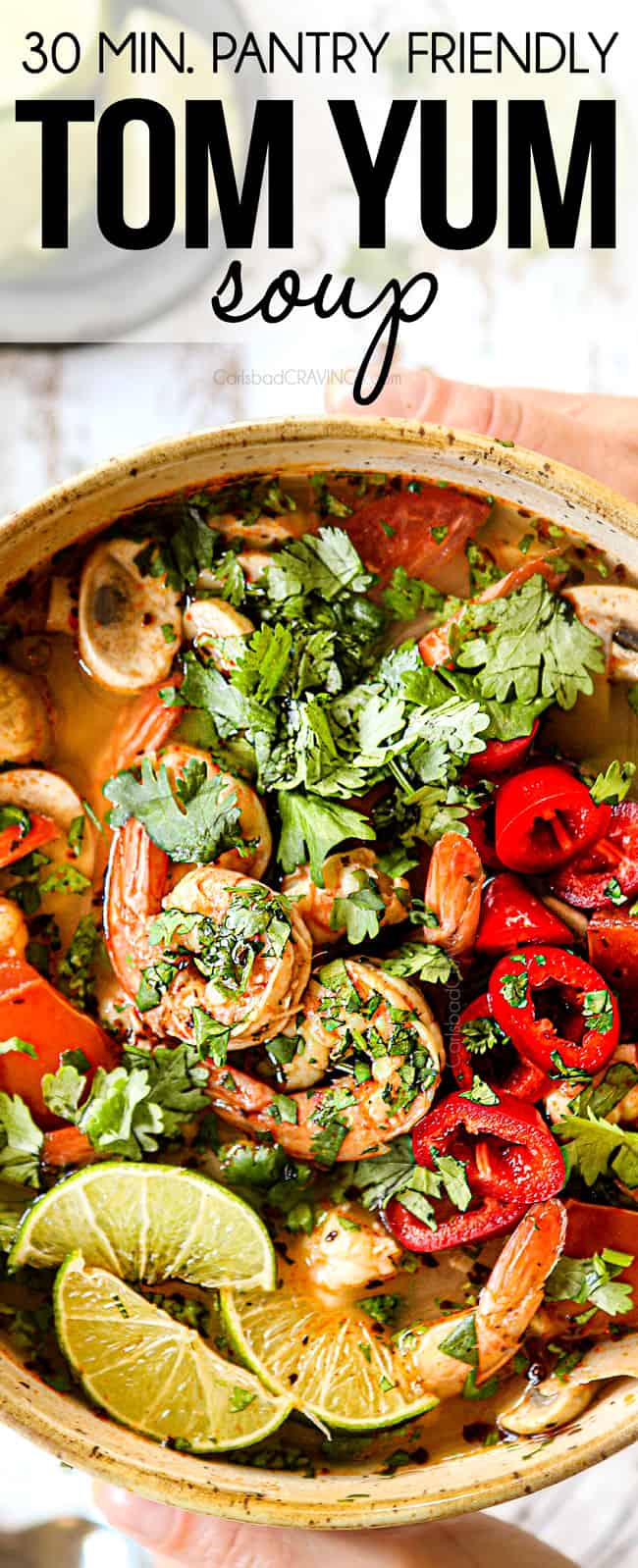
PIN THIS RECIPE TO SAVE FOR LATER
Tom Yum Soup recipe
Thai Tom Yum Soup, also known as Tom Yum Soup Goong, is arguably the most popular soup in Thailand, even the most popular recipe! It has long been a favorite of ours as well, and since we aren’t dining out these days, I’ve recreated it at home with spectacular results. Here’s why you’ll love it:
This Tom Yum Soup recipe tastes RESTAURANT delicious with my secret ingredient and cooking techniques. It’s a tangy, savory, sweet and salty dance of perfect proportions that takes less than 30 minutes to make from scratch but tastes like it’s been simmering for hours. Best of all, you can make a whole pot of Tom Yum Soup for the same price of a bowl at a restaurant!
This Tom Yum Soup recipe is a quick, easy, pantry friendly one-pot wonder. Like Tom Kha Gai, Tom Yum Soup is also incredibly simple to make (hardly any chopping!) as soon as you gather your ingredients. And the great thing about this recipe is you don’t have to hunt down ingredients at an Asian market – you should be able to find everything you need at the grocery store or definitely at Sprouts or Whole Foods.
Easy swaps: You can use ginger plus pepper instead of galangal, bay leaves plus lime zest instead of kaffir lime leaves, chili paste instead of Thai red chilies, and frozen/defrosted shrimp instead of whole fresh shrimp. Even with these swaps, this Thai Tom Yup Soup still tastes authentically delicious, exploding with knock-your-socks-off flavor.
Thai Tom Yum Soup is easy to customize when you make it at home. You can make it crazy spicy or keep it super mild, make it more or less sour, add more or less ginger, more or less garlic, add noodles, add veggies and even swap the protein. You can serve Tom Yum Soup as-is or with sticky rice as a main dish. You can even double or triple this recipe for meal prep, make ahead or company.
In addition, Tom Yum Soup is probably the healthiest Thai dish with a base of chicken broth and lean shrimp as the protein. It’s a low-carb, gluten free, one-pot wonder.
What Is Tom Yum Soup?
Tom Yum Soup (ต้มยำ), is also known as Thai Hot and Sour Soup, or Tom Yum Soup Goong when it features shrimp and Tom Yum Soup Gai when it features chicken.
Thai Tom Yum Soup is a bold, spicy, hot and sour soup that originated in Thailand and remains their most popular soup to this day. It is characterized by the flavors of lemongrass, lime juice, galangal, garlic, kaffir lime leaves, Thai chilies, and fresh lime juice combined in a clear chicken broth or cream broth, most often with shrimp. In Thailand, it is sometimes served with sticky rice on the side.
TWO TYPES OF TOM YUM SOUP
If you love to Tom Yum Soup, you might be aware there are two different version of the dish:
- Clear Tom Yum Soup (Tom Yum Soup Goong Nam Sai): Tom Yum Soup with shrimp in clear broth.
- Creamy Tom Yum Soup (Tom Yum Soup Goong Nam Khon): Tom Yum Soup with shrimp in a creamy broth with the addition of evaporated milk. Creamy Tom Yum Soup is not to be confused with Tom Kha which uses coconut milk instead of evaporated milk.
WHAT DOES TOM YUM SOUP MEAN?
The literal translation of Tom Yum Soup is “boiling spicy and sour,” but in essence it means, “Boiling Hot and Sour” soup. It can be broken down as: TOM means “soup” or “boiled/cooked” and YUM means “spicy and sour.”
You will also see variations of Tom Yum Soup referred to by specific ingredient, for example:
Tom Yum Soup Goong refers to Tom Yum Soup with shrimp (Goong meaning shrimp); and Tom Yum Soup Gai refers to Tom Yum Soup with chicken (Gai meaning chicken).
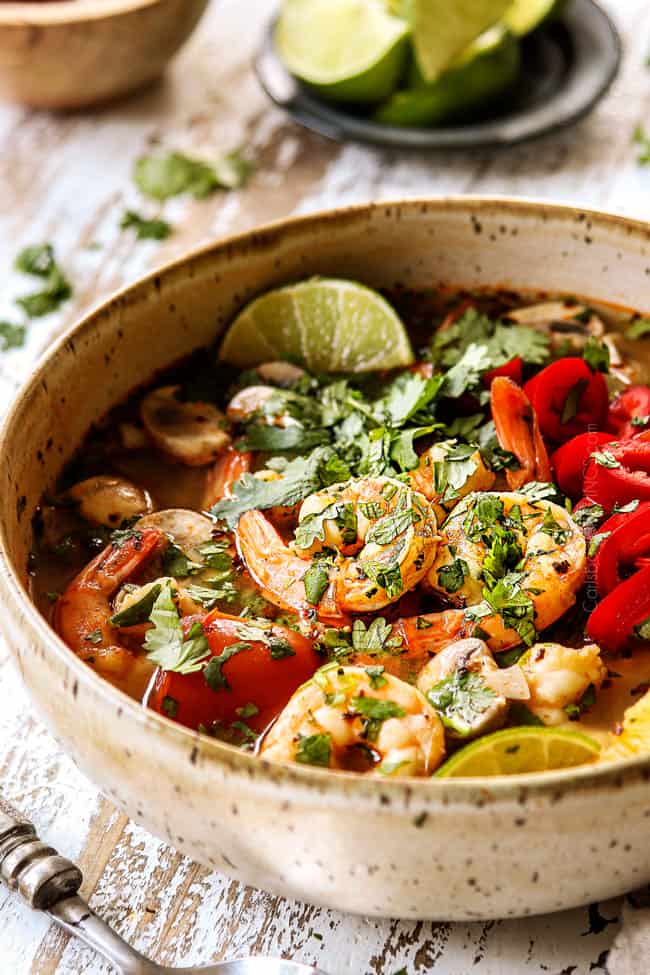
What is the difference between Tom kha and tom yum soup?
If you’ve made my popular Tom Kha Gai recipe, you are probably thinking that these two soups sound very similar – and you would be right! Both Tom Yum Soup and Tom Kha are hot and sour soups that feature the same basic ingredients of lemongrass, kaffir lime leaves, galangal, etc. with one key difference – the base of Tom Yum Soup is chicken broth and the base of Tom Kha is chicken broth plus coconut milk to create a creamier, coconut-y version. In fact, this Tom Yum Soup recipe is modeled after my Tom Kha recipe.
Another minor difference is Tom Kha is is traditionally made with chicken, whereas, Tom Yum is traditionally made with shrimp.
WHAT IS TOM YUM SOUP MADE OF?
Tom Yum Soup is made with a base of chicken broth or homemade shrimp stock infused with lemongrass, galangal, kaffir lime leaves and Thai red chilies. Shrimp is the most popular protein too add to the soup. It’s bright and refreshing, both light and satisfying at the same time, and its layers of tantalizing spices are mesmerizing.
In this Tom Yum Soup recipe, I’ve included instructions on how to make the soup with more exotic, authentic ingredients as well as how to make it with with easy-to-find ingredients because I want everyone to be able to make this tantalizing soup! I think you’ll find, however, that your Tom Yum Soup will taste every bit as complex, authentic and delicious with the pantry substitutions – winning.
The ingredient list for Tom Yum Soup looks lengthy, but I promise the soup comes together very quickly!
- Kaffir lime leaves: add the unique citrus and herbaceous notes crucial to many Thai dishes. You can find fresh kaffir lime leaves at most Asian markets or you may also substitute with dried kaffir lime leaves in the same amount. I’ve also included a pantry friendly substitute.
- Galangal: is like ginger but with a more peppery flavor. It is available at Asian markets or see substitution below.
- Lemongrass: is essential to Thai Tom Yum Soup, so don’t skip it! It adds a complex slightly sweet, pungent, and lemony taste. Lemongrass can usually be found in the produce section of your grocery store, otherwise specialty produce stores like Sprouts and Whole Foods carry it. I’ve included a section below on how to work with lemongrass. If you can’t find fresh lemongrass, you may substitute with 1 tablespoon paste.
- Thai red curry paste: can be found in the Asian section of any grocery store. The premade paste is comprised of finely ground coriander, peppercorns, Kaffir lime leaves, lemongrass, galangal, lime leaves, cilantro, shallot, garlic, and fresh chiles – all combined for you for dynamic flavor.
- Garlic: I use 5 garlic cloves but you may use more or less depending on your garlic love.
- Chicken broth: has more flavor than vegetable broth but you may substitute with vegetable if it’s all you have on hand.
- Fish sauce: I promise fish sauce will not be detectable or make your Tom Yum Soup taste fishy – even though it smells fishy! It is needed, however, to infuse the soup with its nutty, rich, savory, salty flavor. If you’ve never used fish sauce before, it can be found in the Asian section of any grocery store.
- Lime juice: the fresh lime juice of approximately 2 limes. You may want to add more to taste at the end of cooking.
- Shrimp: use extra-large (26/30 count) raw, shelled, deveined shrimp to make this recipe super simple.
- Dried basil: I use dried basil for its concentrated flavor but you may use fresh if you prefer. You will need 3X the amount.
- Brown sugar: balances the savory, citrus tones.
- Mushrooms: I use white mushrooms but any variety will do.
- Tomatoes: Roma tomatoes chopped into wedges.
- Vegetable oil: you may substitute with another neutral olive oil.
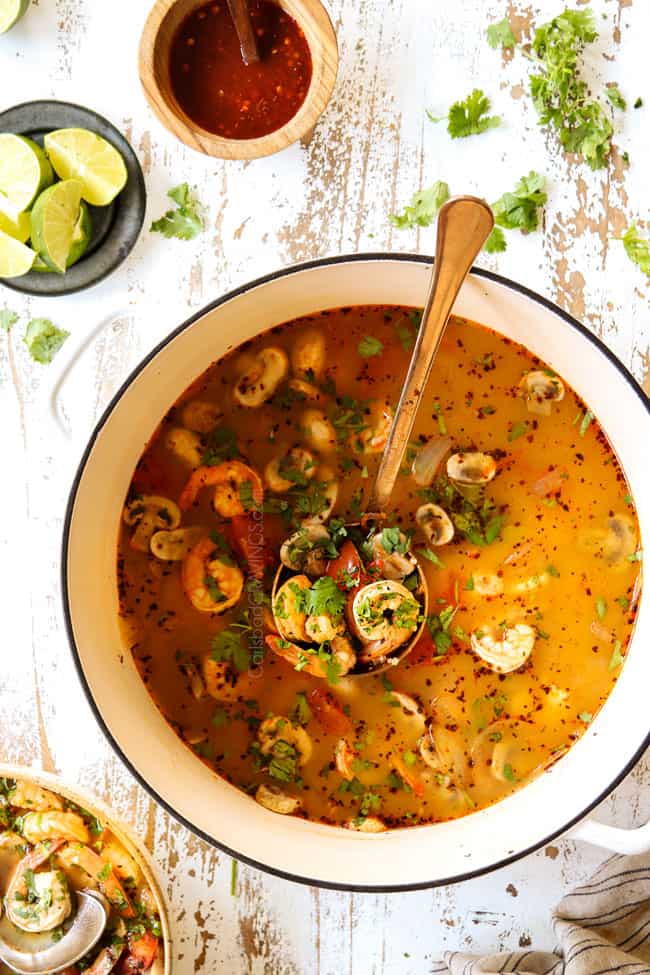
CAN I MAKE TOM YUM SOUP RECIPE WITH GINGER INSTEAD OF GALANGAL?
Galangal tastes much like ginger with the complexity of pungent, pepper-pine undertones. So basically, it is ginger on steroids. I have successfully made this Tom Yum Soup recipe, however, by substituting the galangal with ginger and a healthy dose of pepper.
If making a trip to the Asian market is easy for you, then go with the galangal, but you will NOT be disappointed if you use the ginger instead.
What can i substitute for kaffir lime leaves?
Kaffir lime leaves can be difficult to find without a special trip to an Asian market. Fortunately, you can use a combination of ingredients to closely mimic the complex flavor; it won’t be an exact replica, but a close one.
In the place of kaffir lime leaves, use bay leaves plus lime zest. The bay leaves offer the strong herbal flavor and the lime zest adds the sharp, clear citrus punch.
HOW TO USE LEMONGRASS?
If you’ve never worked with lemongrass before, don’t be intimidated! Lemongrass is one of my favorite ingredients and absolutely essential to this Thai Tom Yum Soup. I also use it in my Lemongrass Chicken, Tom Kha Gai, Laksa and Vietnamese Noodles, so it’s definitely worth becoming familiar with.
WHAT EXACTLY IS LEMONGRASS?
Lemongrass lives up to its name – it is perennial grass that grows in tropical climates with a pungent, lemony taste. It is widely used in Thai and Vietnamese cuisine and as a medicinal herb in India.
HOW DO I CHOOSE LEMONGRASS?
When selecting lemongrass at the store, look for stalks that are firm but slightly pliable rather than soft and rubbery or dried out and brittle. Look for stalks that transition from pale yellow at the base to bright green in the husks and avoid stalks with leaves that are starting to brown.
HOW DO I USE LEMONGRASS?
Lemongrass can be used for different purposes. The tender white core is traditionally chopped or ground for marinades, curries or stir fries. The stalk of lemongrass is used to release its flavor in soups and stews like this Thai Tom Yum Soup.
HOW DO I CUT LEMONGRASS?
To use the lemongrass, start by chopping off the bottom and spiky tops. Peel off the tough green outer layer to reveal the softer whitish/green part. Press the stalks with the side of your knife to bruise and release the aromatic oils, then cut them into thirds to fit into your pot. Let the lemongrass simmer with your soup then remove it when the soup is done – then taste the magic!
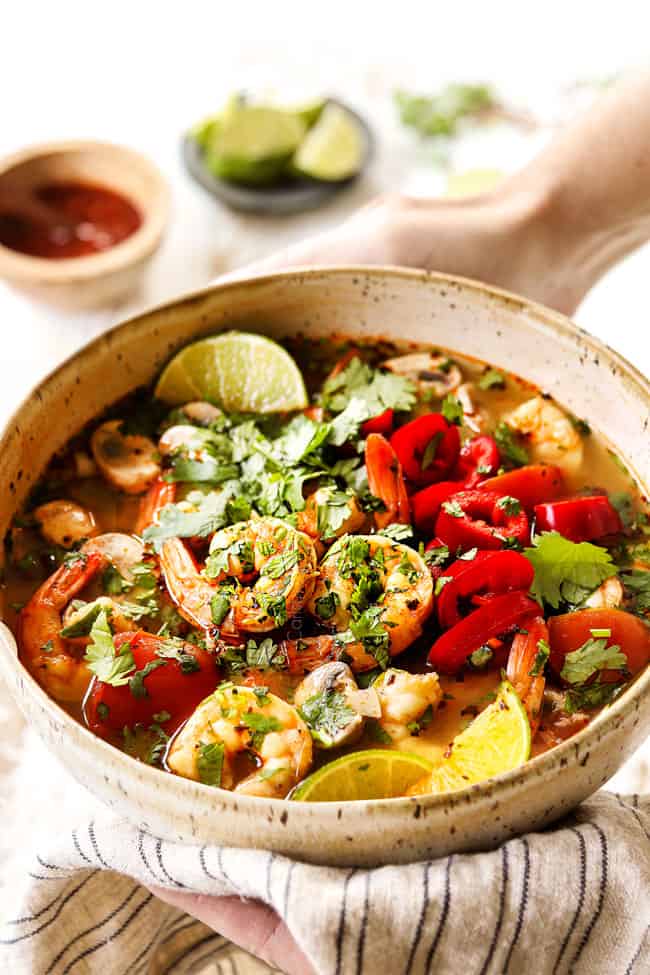
Recipe variations
- Creamy Tom Yum Soup: add ⅓ cup evaporated milk when you add the shrimp.
- Tom Yum Noodle Soup: fresh egg noodles are traditional or you can use rice vermicelli/thin rice noodles/sticks broken into pieces like I do in my Thai Chicken Noodle Soup. Soba noodles would also be tasty. You will want to add the noodles the last few minutes of cooking (they usually take 5 minutes), just before the shrimp. You can also cook the noodles separately then add to bowls and ladle the soup over top.
- Chicken Tom Yum Soup: sauté bite size chicken thighs with the onions/lemongrass and proceed with the recipe.
- Tom Yum Soup with Pork: brown ground pork (or ground chicken) with the onions/lemongrass, etc. and proceed with the recipe.
- Tom Yum Soup with Tofu: place firm tofu in a pie plate, top with a heavy plate and weigh down with 2 heavy cans (to release water). Set aside for 10 minutes while you finish prepping the ingredients and begin cooking the soup. Chop into ½-inch cubes and add with the mushrooms.
- Thai chilies: add 10 Thai chile peppers, pounded with the edge of a knife or cooking mallet to release the flavor to the broth instead of the chili paste.
- Vegetables: add anything you want! Bell peppers, zucchini, cauliflower, etc.
- Shrimp broth: you can make the broth extra flavorful by making your own shrimp broth. Purchase fresh shrimp with shells attached. Peel the prawns and reserve the meat. Make the recipe as written, replacing half of the broth with water and adding the shrimp heads and shells at the same time as the broth. Strain the broth after simmering 10 minutes.
CAN I MAKE TOM YUM SOUP RECIPE VEGAN?
Absolutely! To make vegan Tom Yum Soup:
- Replace the chicken broth with vegetable broth
- Replace the fish sauce with soy sauce
- Omit the shrimp completely or replace it with one-pound firm cubed tofu as outlined above
HOW TO MAKE TOM YUM SOUP
- Sauté lemongrass and curry for more flavor. Tom Yum Soup is very simple to make. First, we want to bloom the curry paste and lemongrass, which is essentially frying it in oil to unlock the flavor. You’ll also sauté the onions and garlic.
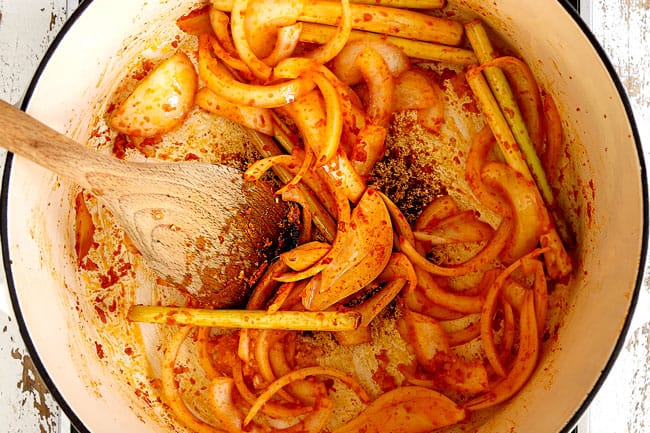
- Add soup ingredients and simmer. Now it’s, time for the stock. Simply add the chicken broth, fish sauce, Asian chili sauce, brown sugar, basil, kaffir lime leaves or bay leaves and bring to a boil. Lower heat to medium-low; cover and gently simmer for 10 minutes.
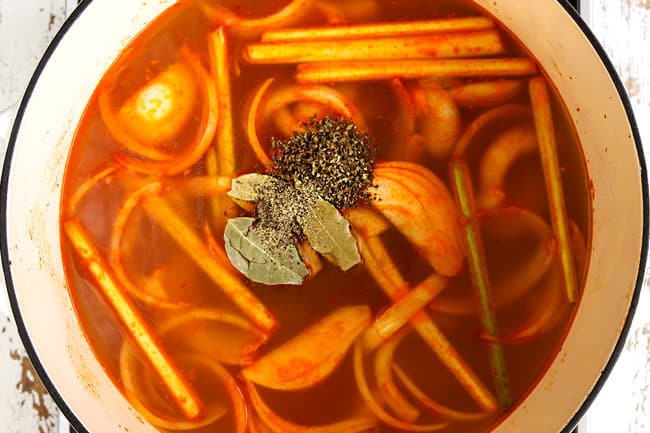
- Strain broth. After 10 minutes, strain the broth by transferring to a colander over a pot then return the broth to the soup pot.
- Add shrimp. Stir in lime juice, mushrooms, tomatoes and shrimp. Simmer 2-3 additional minutes or until shrimp are cooked through.
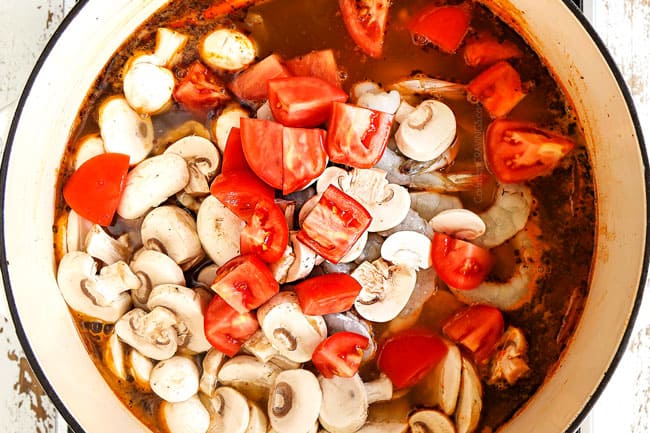
- Garnish. Top individual bowls with fresh cilantro, green onions, and fresh lime juice to taste.
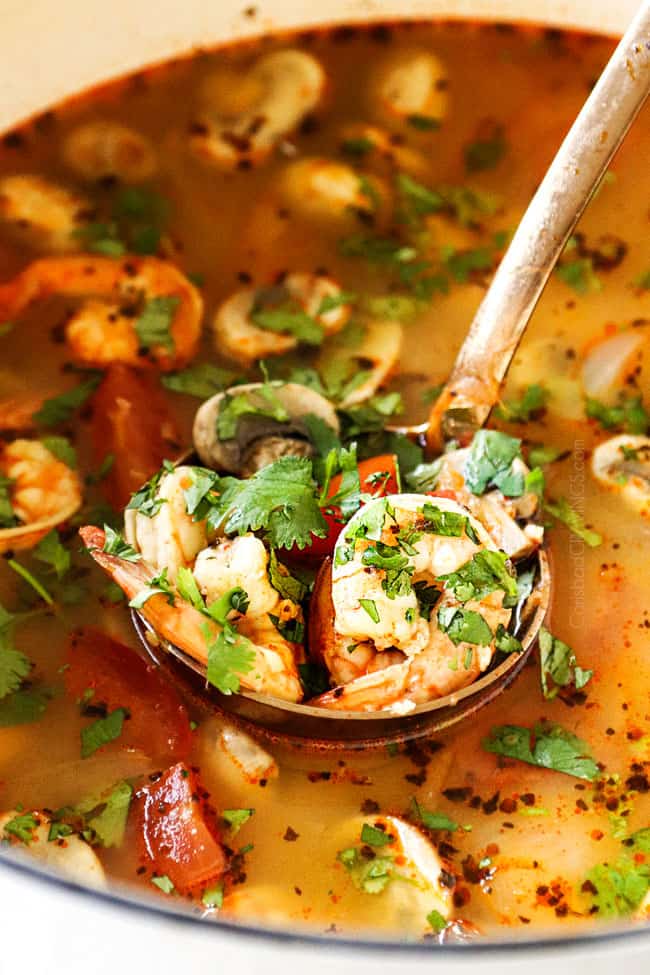
Tom Yum Soup Recipe Tips
- Don’t overcook shrimp. Nothing will ruin your Thai Tom Yum Soup like rubbery shrimp! Shrimp requires much less cooking time than you might think, so pay close attention and remove the soup from heat as soon as the shrimp is opaque.
- Use large shrimp. Large shrimp are harder to overcook so they’ll stay nice and juicy. I purchase my shrimp at Costco because it comes shelled and deveined for an economical price.
- Adjust to taste. Add additional lime juice for more sour/citrus, more chili sauce for more heat, more sugar for sweeter/less tangy, more fish sauce for saltier etc.
WHAT TO SERVE WITH Thai TOM YUM SOUP?
In Thailand, Tom Yum Soup is often served alongside sticky rice. You can even add rice to your bowl then spoon the soup over it.
As far as toppings, the more, the better! I love fresh, citrusy cilantro, earthy, fresh basil, sharp green onions, and spicy chilies. The beauty of making your own Tom Yum Soup, is you can make it perfect for YOU!
At Thai Restaurants Tom Yum Soup is served as an appetizer, which means you get to pair it with any of your Thai favorite main courses such as:
- Pad Thai
- Panang Curry
- Red Curry Chicken
- Yellow Curry
- Green Curry
- Coconut Curry Chicken
- Chicken Satay with Peanut Sauce

HOW LONG IS TOM YUM SOUP GOOD FOR?
The flavors of this Tom Yum Soup only improve overnight, so it makes fantastic leftovers. Tom Yum Soup should be stored in an airtight container in your refrigerator for 2-3 days.
HOW DO I REHEAT Thai TOM YUM SOUP?
You can reheat Tom Yum Soup on the stove, in the microwave or crockpot. In each method, remove the shrimp and add it back to the soup after the broth is warmed so you don’t overcook the shrimp which will make them rubbery.
- Stove: transfer Tom Yum Soup to a pot (without shrimp) and heat over medium-low heat, stirring occasionally until heated through. Add shrimp and heat through.
- Microwave: transfer individual servings of soup to a microwave-safe dish (without shrimp). Microwave for 1 minutes, stir, then continue to microwave for 30-second intervals, if needed, until warmed through. Add shrimp and heat for an additional 20-30 seconds.
- Crockpot: add Tom Yum Soup to the crockpot (without shrimp), cover and heat on low for 1 hour or until warmed through. Add shrimp and heat through.
CAN I FREEZE TOM YUM SOUP?
Yes! Tom Yum Soup freezes well because there is not any dairy. I don’t care for the texture of the mushrooms and tomatoes when frozen, however, so I suggest adding those back in fresh when you’re ready to defrost and serve.
To freeze:
- Let soup cool completely.
- Add Tom Yum Soup to a freezer safe container(s) or freezer size bag(s) and squeeze out any excess air to prevent freezer burn before sealing.
- Freeze for up to 3 months.
- When ready to eat, let soup defrost in the refrigerator overnight.
- Warm per above instructions.
LOOKING FOR MORE THAI RECIPES?
- Thai Chicken Lettuce Wraps
- Thai Chicken Pizza
- Thai Chicken Noodle Soup
- Thai Soup with Chicken and Wild Rice
- Thai Peanut Dressing
- Thai Peanut Beef and Broccoli
- Thai Chicken Tacos
- Curried Butternut Squash Soup
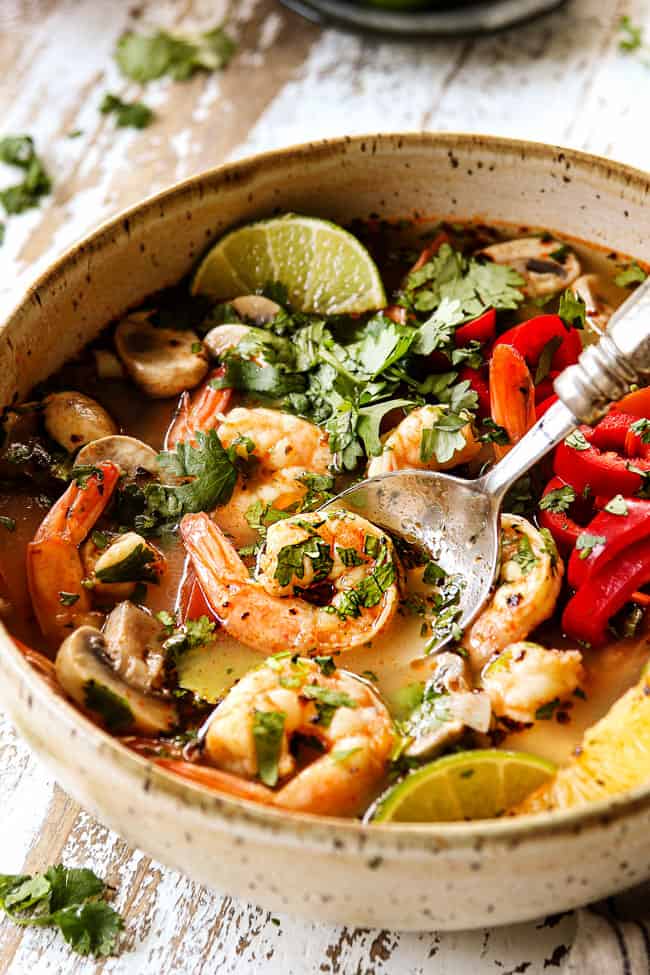
Want to try this Tom Yum Soup RECIPE?
Pin it to your Soup, Dinner or Asian Board to SAVE for later!
Find me on Pinterest for more great recipes! I am always pinning :)!
©Carlsbad Cravings by CarlsbadCravings.com

Tom Yum Soup
Save This Recipe To Your Recipe Box
You can now create an account on our site and save your favorite recipes all in one place!
Ingredients
- 2 tablespoons Vegetable oil
- 1 tablespoon Thai red curry paste
- 3 stalks lemongrass
- 1/2 medium white onion sliced
- 5 garlic cloves minced
- 1 3-inch piece galangal or ginger sliced into ½ pieces (no need to peel)
- 6 cups reduced sodium chicken broth
- 3 tablespoons fish sauce
- 1 teaspoon Asian chili sauce more or less to taste (optional)
- 1 teaspoon brown sugar
- 1 teaspoon dried basil
- 5 kaffir lime leaves, roughly torn or 3 bay leaves +1 teaspoon lime zest
- 1/4 teaspoon pepper **OMIT if using galangal and not ginger**
ADD LATER:
- 3 tablespoons lime juice
- 1 pound large raw shrimp peeled, deveined
- 8 oz. white mushrooms sliced
- 2 large Roma tomatoes cut into 2” wedges
Garnish
- cilantro
Instructions
- Heat vegetable in a large stock pot over medium heat. Add red curry paste, lemongrass and onions and sauté for 2 minutes. Add garlic and sauté 30 seconds.
- Add the rest of the soup ingredients through the pepper (up to the "add later" ingredients). Cover and bring to a boil, then lower heat to medium-low. Gently simmer, covered, for 10 minutes.
- After 10 minutes, strain the broth by transferring to a colander over a pot then return the broth to the soup pot.
- Stir in lime juice, mushrooms, tomatoes and shrimp. Simmer 2-3 additional minutes or until shrimp is cooked through.
- Taste and add additional lime juice for more sour/citrus, more chili sauce for more heat, more sugar for sweeter/less tangy, more fish sauce for saltier etc. Garnish individual servings with cilantro.
Video
Notes
Recipe Tips
- Lemongrass: can usually be found in the produce section of your grocery store, otherwise specialty produce stores like Sprouts and Whole Foods carry it. If you can’t find fresh lemongrass, you may substitute with 1 tablespoon paste.
- Kaffir lime leaves: can be found at most Asian markets or you may substitute with dried kaffir lime leaves in the same amount. Alternatively, substitute with 3 bay leaves + 1 teaspoon lime zest.
- Galangal: tastes much like ginger with the complexity of pungent, pepper-pine undertones. It is available at Asian markets or substitute with ginger along with ¼ teaspoon pepper (already listed in recipe).
- Creamy Tom Yum Soup: add ⅓ cup evaporated milk when you add the shrimp.
- Tom Yum Noodle Soup: fresh egg noodles are traditional or you can use rice vermicelli/thin rice noodles/sticks broken into pieces like I do in my Thai Chicken Noodle Soup. Soba noodles would also be tasty. You will want to add the noodles the last few minutes of cooking (they usually take 5 minutes), just before the shrimp. You can also cook the noodles separately then add to bowls and ladle the soup over top.
HOW to store and reheat
- Storage: Store in an airtight container in your refrigerator for 2-3 days.
- Reheat: You can gently reheat Tom Yum Soup on the stove, in the microwave or crockpot. In each method, remove the shrimp and add it back to the soup after the broth is warmed then gently warm through so you don’t overcook the shrimp which will make it rubbery.
How to FREEZE
Tom Yum Soup freezes well but I don’t care for the texture of the mushrooms and tomatoes when frozen, so I suggest adding those back in fresh when you’re ready to defrost and serve. To freeze, let the soup cool completely then transfer to a freezer safe container; freeze for up to 3 months.
Did You Make This Recipe?
Tag @CarlsbadCravings and Use #CarlsbadCravngs
Leave a Review, I Always Love Hearing From You!
Carlsbad Cravings© Original
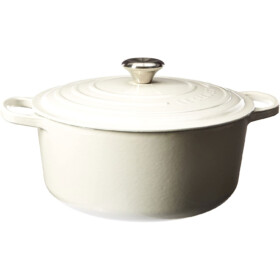

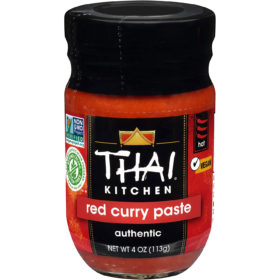
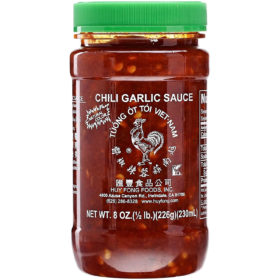
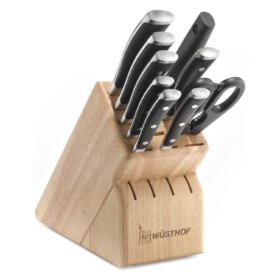
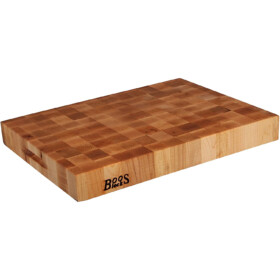




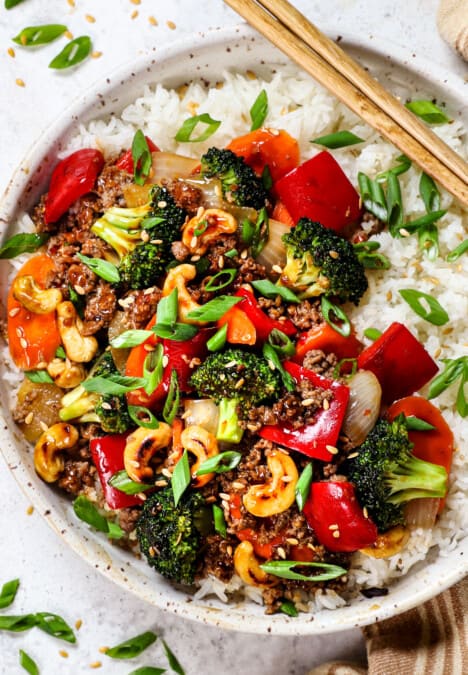

























Sheryll says
Which Asian Chili sauce are you using?
Jen says
I use sambal oelek.
Tracy H says
So delicious! So flavorful!! I added 2 red peppers sliced,
Jen says
Yum! I’m so glad you enjoyed it!